
How to Use 6V Solar Panel: Examples, Pinouts, and Specs
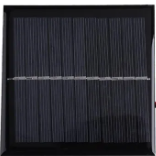
 Design with 6V Solar Panel in Cirkit Designer
Design with 6V Solar Panel in Cirkit Designer6V Solar Panel Documentation
1. Introduction
The 6V Solar Panel is a compact and efficient device designed to convert sunlight into electrical energy. It provides a stable 6-volt output, making it ideal for powering small electronic devices, charging batteries, or serving as a renewable energy source for low-power applications. Its lightweight and durable design make it suitable for both indoor and outdoor use.
Common Applications:
- Charging rechargeable batteries (e.g., NiMH, Li-ion, or lead-acid batteries).
- Powering small electronic projects, such as Arduino-based systems.
- Providing energy for portable devices like LED lights or small fans.
- Educational projects and experiments related to renewable energy.
- Emergency backup power in off-grid scenarios.
2. Technical Specifications
The following table outlines the key technical details of the 6V Solar Panel:
| Parameter | Specification |
|---|---|
| Output Voltage | 6V (nominal) |
| Maximum Current | 300mA (under optimal sunlight) |
| Power Output | 1.8W (maximum) |
| Dimensions | 165mm x 135mm x 3mm |
| Weight | ~100g |
| Material | Polycrystalline or Monocrystalline Silicon |
| Operating Temperature | -20°C to 60°C |
| Connector Type | Bare wire leads or DC barrel jack |
Pin Configuration and Description
| Wire/Pin | Description |
|---|---|
| Positive (+) | Red wire or marked terminal; provides positive voltage output. |
| Negative (-) | Black wire or unmarked terminal; serves as the ground connection. |
3. Usage Instructions
Connecting the 6V Solar Panel to a Circuit
- Positioning the Panel: Place the solar panel in direct sunlight for optimal performance. Ensure there are no obstructions like shadows or dirt on the panel surface.
- Connecting to a Load:
- Identify the positive (+) and negative (-) terminals of the solar panel.
- Connect the positive terminal to the positive input of your load or circuit.
- Connect the negative terminal to the ground or negative input of your load.
- Using a Voltage Regulator (Optional):
- If your circuit requires a stable voltage lower than 6V, use a voltage regulator (e.g., LM7805 for 5V output).
- Charging a Battery:
- Use a charge controller to safely charge batteries and prevent overcharging.
- Connect the solar panel to the input of the charge controller, and the battery to the output.
Important Considerations:
- Sunlight Intensity: The output voltage and current depend on the intensity of sunlight. Ensure the panel is exposed to direct sunlight for maximum efficiency.
- Overloading: Do not connect devices that draw more current than the panel's maximum output (300mA).
- Reverse Current Protection: Use a blocking diode to prevent reverse current flow from the battery to the solar panel during low-light conditions.
4. Example: Using the 6V Solar Panel with an Arduino UNO
The 6V Solar Panel can be used to power an Arduino UNO through a rechargeable battery and a charge controller. Below is an example setup:
Components Required:
- 6V Solar Panel
- 5V Voltage Regulator (e.g., LM7805)
- Rechargeable Battery (e.g., 6V lead-acid or 4x AA NiMH)
- Charge Controller
- Arduino UNO
- Blocking Diode (e.g., 1N5819)
Circuit Diagram:
[6V Solar Panel] --(+)--> [Blocking Diode] --(+)--> [Charge Controller Input]
|
--> [Battery] --> [Voltage Regulator] --> [Arduino UNO]
Arduino Code Example:
The following code reads data from a sensor powered by the solar panel and displays it on the serial monitor.
// Example: Reading sensor data with Arduino powered by a 6V Solar Panel
// Ensure the solar panel is connected to a battery and voltage regulator
// to provide a stable 5V to the Arduino UNO.
const int sensorPin = A0; // Analog pin connected to the sensor
int sensorValue = 0; // Variable to store the sensor reading
void setup() {
Serial.begin(9600); // Initialize serial communication at 9600 baud
pinMode(sensorPin, INPUT); // Set the sensor pin as input
}
void loop() {
sensorValue = analogRead(sensorPin); // Read the sensor value
Serial.print("Sensor Value: "); // Print label to serial monitor
Serial.println(sensorValue); // Print the sensor value
delay(1000); // Wait for 1 second before the next reading
}
5. Troubleshooting and FAQs
Common Issues and Solutions:
| Issue | Possible Cause | Solution |
|---|---|---|
| Low or no output voltage | Insufficient sunlight or dirty panel | Place the panel in direct sunlight and clean the surface. |
| Output voltage fluctuates | Varying sunlight intensity | Use a capacitor or voltage regulator to stabilize the output. |
| Device not powering on | Incorrect wiring or insufficient current | Check connections and ensure the load does not exceed 300mA. |
| Battery not charging | No charge controller or reverse current flow | Use a charge controller and a blocking diode. |
FAQs:
Can I use the 6V Solar Panel indoors?
- Yes, but the output will be significantly lower due to reduced light intensity.
What happens if the panel is exposed to rain?
- Most panels are weather-resistant, but prolonged exposure to water may damage the connections. Use a protective enclosure for outdoor use.
Can I connect multiple panels together?
- Yes, you can connect panels in series to increase voltage or in parallel to increase current. Ensure the total output matches your load requirements.
Do I need a charge controller for small batteries?
- Yes, a charge controller is recommended to prevent overcharging and extend battery life.
By following this documentation, you can effectively integrate the 6V Solar Panel into your projects and harness renewable energy for your electronic devices.
Explore Projects Built with 6V Solar Panel
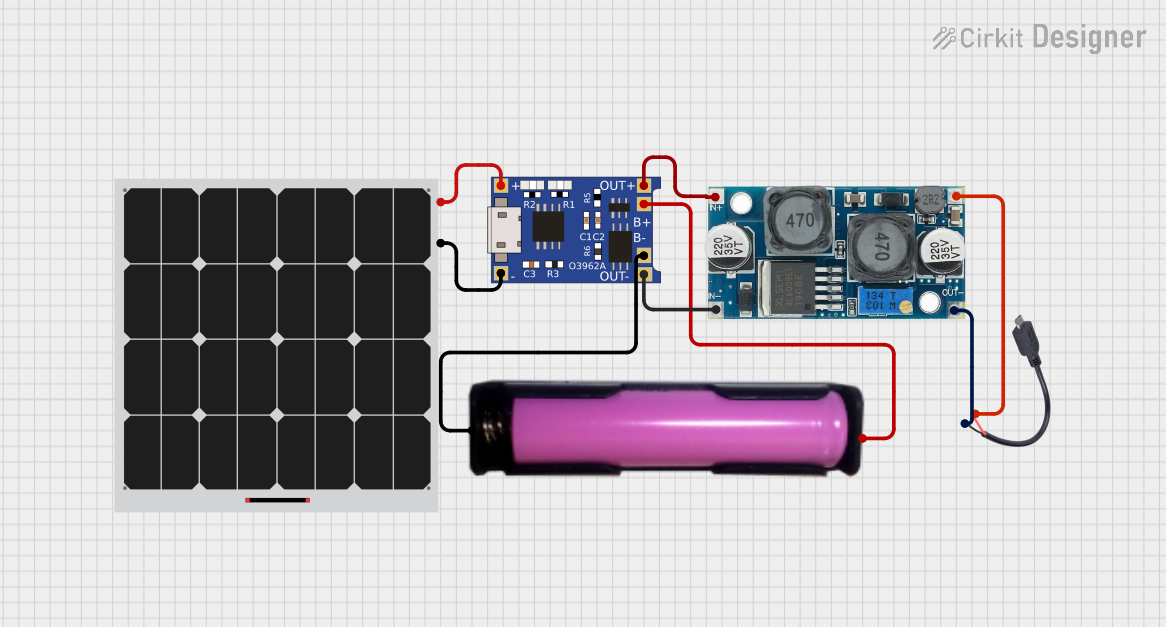
 Open Project in Cirkit Designer
Open Project in Cirkit Designer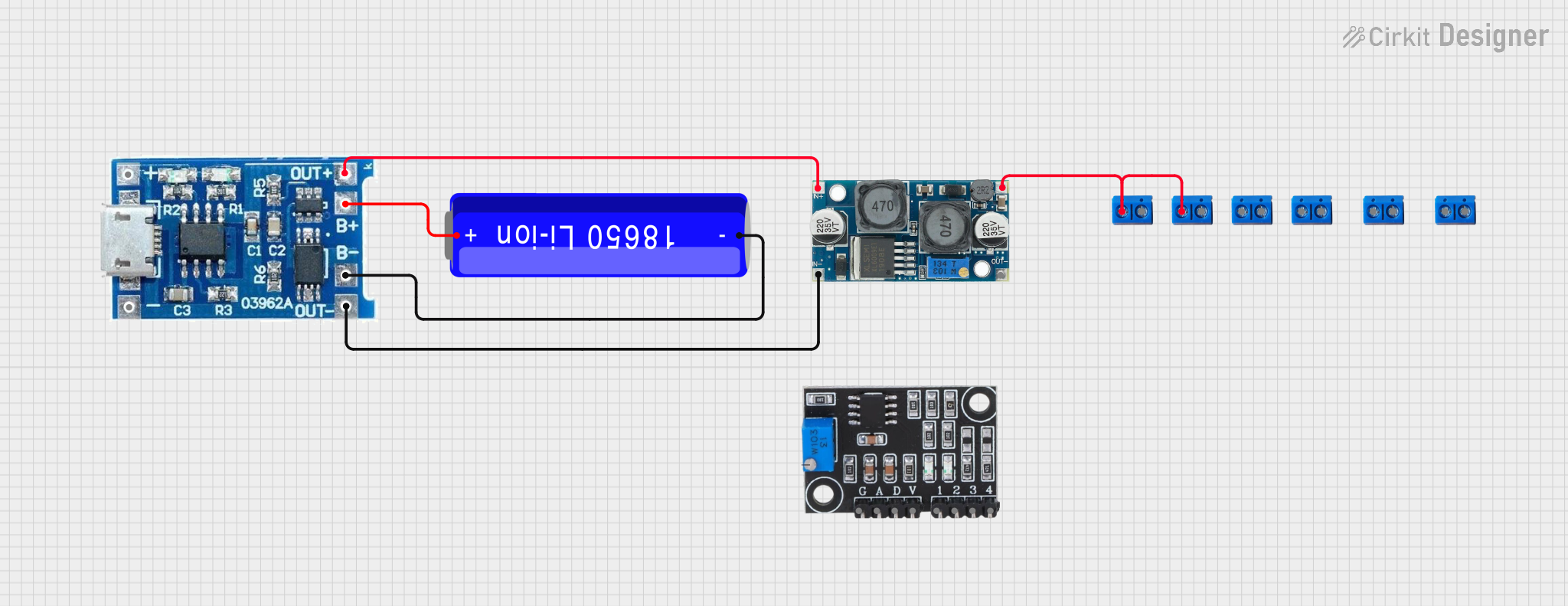
 Open Project in Cirkit Designer
Open Project in Cirkit Designer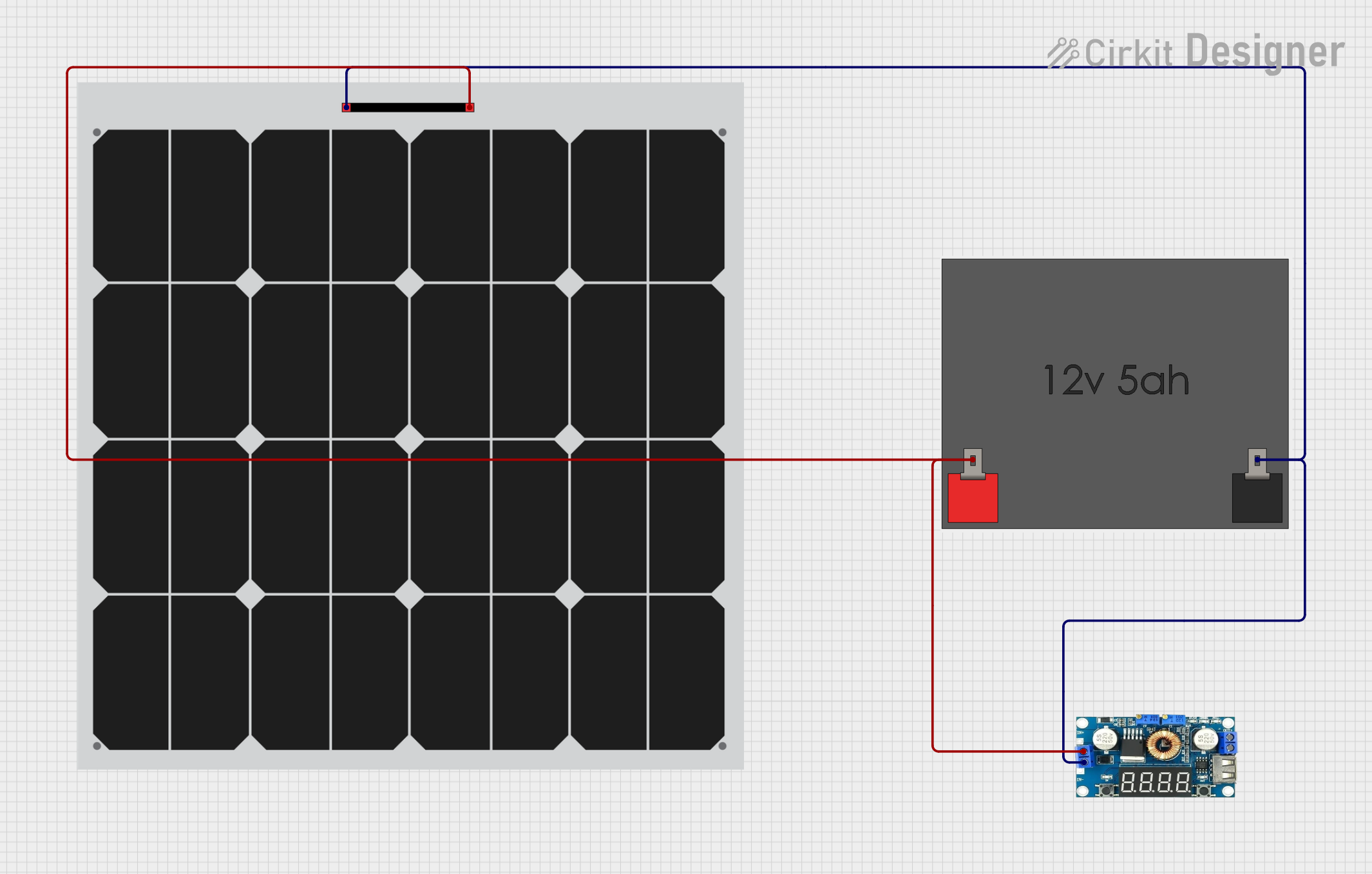
 Open Project in Cirkit Designer
Open Project in Cirkit Designer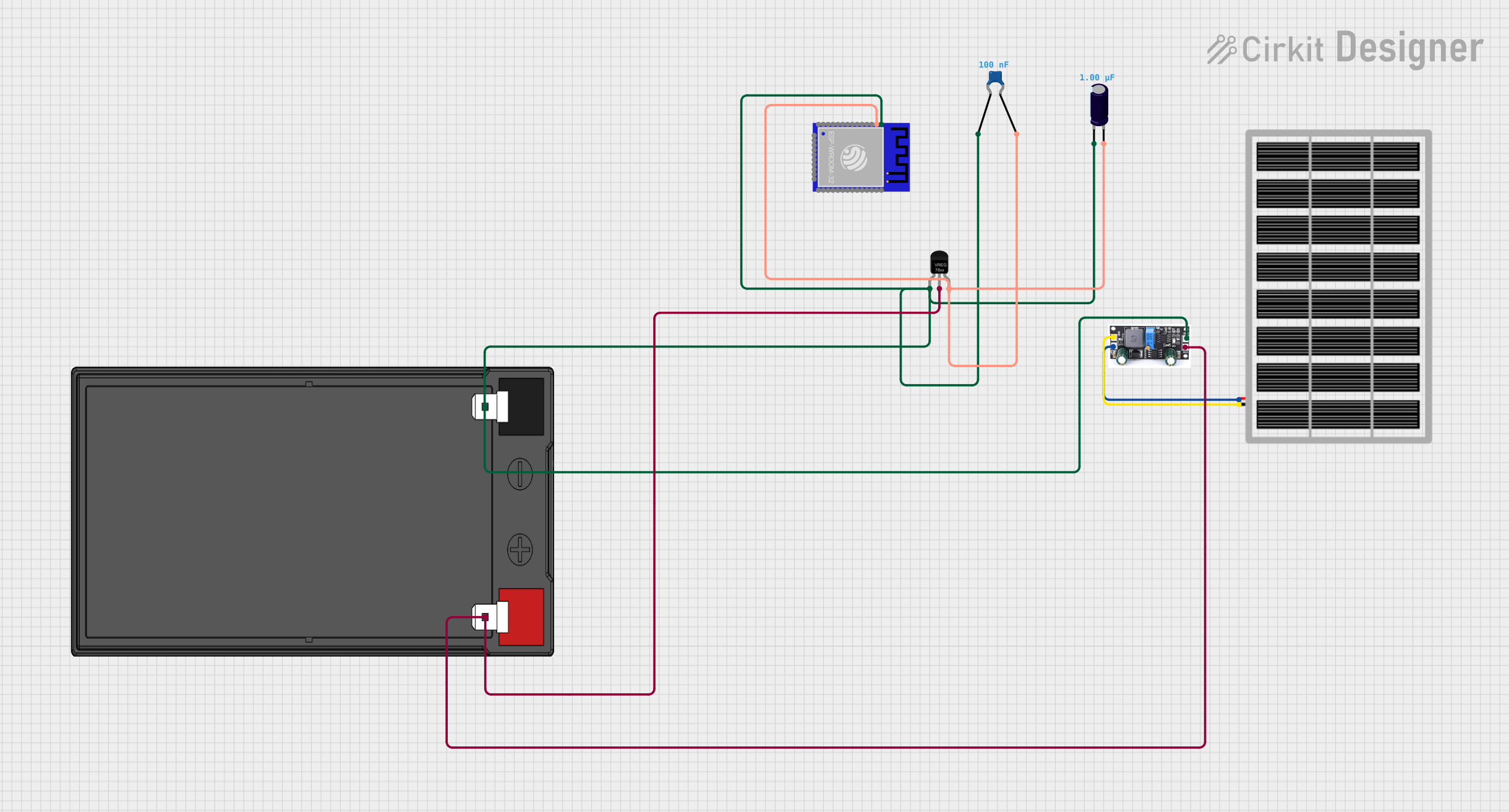
 Open Project in Cirkit Designer
Open Project in Cirkit DesignerExplore Projects Built with 6V Solar Panel

 Open Project in Cirkit Designer
Open Project in Cirkit Designer
 Open Project in Cirkit Designer
Open Project in Cirkit Designer
 Open Project in Cirkit Designer
Open Project in Cirkit Designer
 Open Project in Cirkit Designer
Open Project in Cirkit Designer